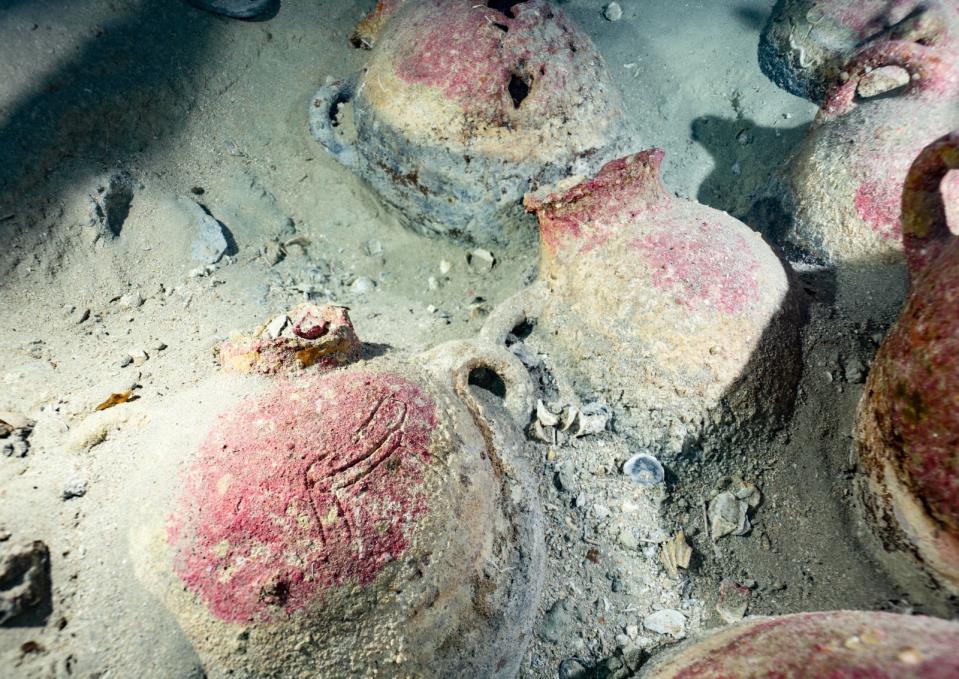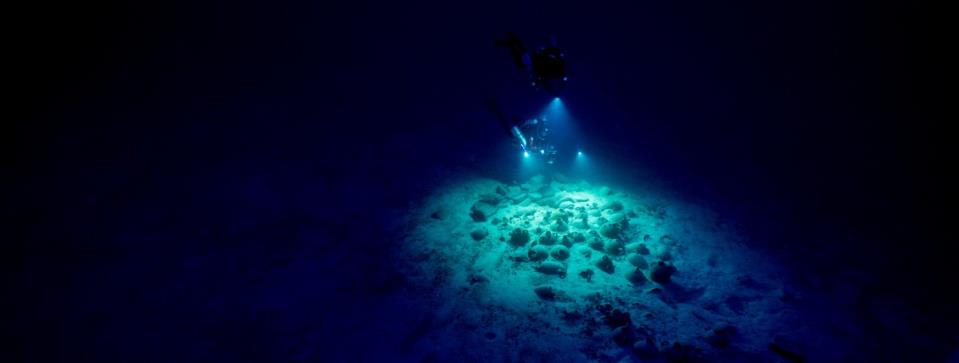
Research on a Phoenician-era shipwreck off Xlendi in Gozo can help us better understand our past, Professor Timmy Gambin told The Malta Independent.
“Our research is important because nobody has excavated at the depth that we have excavated. To a certain extent, we’ve unlocked at least some of the doors for future archaeologists to work at such a depth,” Gambin says.
“This is one of seven Phoenician shipwrecks in the world so any proper study that comes out of these seven shipwrecks is absolutely important.”
Following the four-year excavation project of the Phoenician shipwreck that is located off the coast of Xlendi, the team of international experts, led by the University of Malta, has recently begun a new four-year Post-Excavation Project (2022-2025).
This news comes right after the project was approved for funding by the Ministry of Gozo, receiving €35,000 a year for four years. This grant came to be after the Ministry recognised the success they achieved from 2018-2021, and how their findings are crucial in discovering the role Malta had during the Archaic Mediterranean.
Malta Post also recognised the cultural importance of this project. In fact on 11 July, it released postage stamps of the Phoenician shipwreck.
The Malta Independent sat down with the project director Timmy Gambin, to discuss the extent of the project at hand.
What’s different about this new project of post-excavation that is different to the last four years of excavation?
Initially, Gambin made it clear that the process of post-excavation was crucial for all forms of excavation. “When someone’s planning a project you plan for post-excavation,” he said.

He explained how post-excavation is the term of the project as a whole but out of that comes “a lot of strands and a lot of mini-projects”.
“Now we are at a phase whereby, after four years of excavation we’ve got a massive concentration of objects which are currently going through the final phases of conservation. We’re about the start the thin sections to determine providence, but then there’s a whole host of other tests that we need to do,” he stated.
Gambin gave a brief overview of a few different methods within the post-excavation project.
Firstly, he spoke about the method of conservation, which begins immediately during the project of excavation. He further stated that the process of conservation varies depending on the material they are working with. He gave the example of pottery, where in this case they would need to desalinate the pottery over a long period of time.
Furthermore, they have also begun to research what they extracted. In the case of clay, they will compare certain shapes of amphorae with other findings from other excavations. If there is no comparison, then they need to discover where these objects come from by “sampling a small piece from the pot,” and sending it abroad to be processed in what is called “thin sections”.
In relation to this, he mentioned Dr Maxime Anastasi who is part of their department and is an expert on clays of the Mediterranean. “She can identify where the objects have been made or at least where the clay was sourced from.”
More can be read about this from their study, “The Xlendi Bay shipwreck (Gozo, Malta): a petrographic and typological study of an archaic ceramic cargo”.
In the case of wood, they will measure the levels of carbon-14 in order to determine the period a piece of wood is from.
Moreover, he spoke about the process of Lipid analysis. He explained how Lipids are fats and through Lipid analysis they are looking for traces of fats that have been absorbed by the ceramics.
The process of Lipid analysis entails “taking samples from inside the pots, you process them in certain ways and you get an inclining of what these pots were carrying … for instance the results show that an object was most probably carrying olive oil”.
He also explained how an undergrad student did a study and discovered that sediment is present. As a result, another task of their current project would be palynology, which is the study of the pollen that is being recovered “from the sediments from inside the amphoras”. The study of the pollen found can reveal information about the “past climate of Gozo”.
Nevertheless, he shared how every single object they excavated is 3D scanned and put up on a website so that people who are interested in Phoenician Archaeology can access it.
By scanning the objects in 3D, they are now attempting to try and calculate “the tonnage of the ship and its shape based on the contents … by reconstructing the stowing of the amphorae in 3D”.
With reference to the exhibitions that they have held in the past and the lectures they have hosted, we asked him about the significance of his findings and what he would like to share with the public.
He made it clear that one thing that is very important in the post-excavation phase is “outreach.”
This comes in different formats. On the one hand, he implements a lot of their findings in his lectures, so that his students can be exposed to new evidence. However, he identified that “those are the chosen few because the vast minority are university students”.
“In order to take the site to the general public, we do outreach via public lectures, we have a 360-video campaign, we had the exhibition which was first in Gozo, then at the National Aquarium, then at the National Museum of Archaeology. We’re going to have a display about the Phoenician shipwreck in the new Gozo Museum.”
He also made it clear that a big “part of post-excavation is making sure that you get your research right so that the story you end up telling in a museum is the correct story. But not only is it correct in a dry academic way, but also we do enough research that we’re able to bring the story to life”.
Following this point, he revealed that their most spectacular find was the human tooth, which was discovered last year. They are currently looking into conducting DNA tests, which will expose a lot of information such as gender, age, and the origin of the person.
“We’re looking at what could possibly be the consolidation of the Mediterranean diet. Which is grain wine and olive oil,” he stated. He revealed how they are already aware that the ship contained grain and olive oil.
“This is a time when the people were occupying the central Mediterranean from the East … and they’re bringing with them long-established traditions and cultures. In so doing they are altering the tastes of the indigenous people.”
He elaborated on how through these studies we can “look back into the galaxy of the Mediterranean diet”.
He described the significance of these studies by stating this: “It's a bit like that picture that's just been released by NASA, we're able to look back to the galaxy of the Mediterranean diet. This is hugely important not only because the Mediterranean diet is still with us and considered to be one of the keys to a healthy and long life but it’s also threatened by climate change, so we're looking at something that could be if not in imminent danger of disappearing, at least on the threatened list.”
Finally, we asked him whether or not they plan on diving down to the shipwreck again in the future.
In response to this, he stated that with regards to excavation, over the past four years “everything that we set out to do, we did”.
Rather than spending another few years excavating another trench which would increase the amount of post-excavation that they would have to do, they chose to focus on what they have already excavated in order to try and understand as much as they can.
Nevertheless, they will still conduct the occasional inspection dive. Therefore, part of the post-excavation project will entail a dive once or twice a year down to the shipwreck to make sure that everything is fine.
He concluded by explaining that “to this day the ship is the biggest piece of moving technology made by man”. According to him, this shows how important ship technology really is, and therefore, “how important the history of shipbuilding technology is to us”.